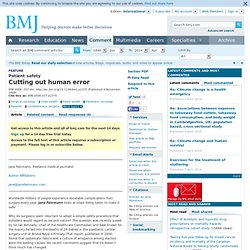

FISH Genetic Testing. Family Planning-Pregnancy Test, Ovulation Test, Fertility Monitor. hCG: The Test. At a Glance Why Get Tested?

To confirm and monitor pregnancy or to diagnose trophoblastic disease or germ cell tumours When to Get Tested? As early as 10 days after a missed menstrual period (some methods can detect hCG even earlier, at one week after conception) or if a doctor thinks that your symptoms suggest ectopic pregnancy, a failing pregnancy, trophoblastic disease or germ cell tumours.
Early Pregnancy Loss, Management (Green-top 25) York Medical School/Seven HYMS Themes Teaching and Learning/Clinical Sciences/Reproduction and development system/Documents/Word%2C PDF%2C RTF/B11W1 screening timeline antenatal.pdf. Periconceptional Folic Acid and Food Fortification in the Prevention of Neural Tube Defects (SAC Opinion Paper 4) Scientific Impact Paper 4 This paper is available as a pdf: Periconceptional Folic Acid and Food Fortification in the Prevention of Neural Tube Defects (Scientific Impact Paper 4) 1.
Background Neural tube defects (NTDs), which comprise open spina bifida, anencephaly and encephalocele, complicate 1.5/1000 pregnancies in the UK,1 and represent the first congenital malformations to be preventable through public health measures. The use of supplements requires a conscious effort on the part of women anticipating a pregnancy, as adequate folic acid is needed at the time of embryogenesis.
The RCOG via its Scientific Advisory Committee in 1997 has previously advocated mandatory food fortification in the UK, such as through bread flour. 2. 2.1 Diet and congenital malformations. Antenatal care. Fast, easy summary view of NICE guidance on 'antenatal care' the routine care that all healthy women can expect to receive during their pregnancy. women who are pregnant with more than one baby, women with certain medical conditions or women who develop a health problem during their pregnancy.

This is an update of advice on ' Antenatal care: routine care for the healthy pregnant woman ' that NICE produced in 2003. The recommendations about smoking in pregnancy in section 1.3.10 of this guideline have been further developed in ‘How to stop smoking in pregnancy and following childbirth’ (NICE public health guidance 26). Drugs in Pregnancy and Breastfeeding : SafeFetus.com. Adverse Events Frequently Occur in Hospitals. (November 29, 2007 - Insidermedicine) As many as one-tenth of people admitted to hospital in the United Kingdom experience harm as a result of medical errors, according to a study published in Quality and Safety in Health Care.

Here are some facts about the safety of hospital patients: • In developed countries, medical errors occurring in hospitals are estimated to cause harm to about 10% of patients. They are believed to occur much more often in the developing world. • One of the most common ways of being harmed in hospital is to pick up an infection. To prevent this, hospital staff should ensure they change gloves or wash their hands thoroughly when moving from patient to patient. • In developed countries, errors related to surgical procedures are a common cause of avoidable harm to hospitalized patients. User account. WHO Patient Safety. Cutting out human error. Worldwide millions of people experience avoidable complications from surgery every year.

Jane Feinmann looks at steps being taken to make it safer Why do surgeons seem reluctant to adopt a simple safety procedure that outsiders would regard as second nature? The question was recently posed by Sir Ian Kennedy, chair of the Healthcare Commission and best known for the inquiry he led into the deaths of 29 babies in the paediatric cardiac surgery unit at Bristol Royal Infirmary. That report, published in 2000, found that systematic failure and a culture of arrogance among doctors were the leading causes.
His recent comments suggest that he doesn’t think much has changed. “It comes as a shock that a group of professionals should be prepared to wait until something disastrous occurs before they agree to change their behaviour. Last week, the health select committee began to question senior doctors and managers as part of its inquiry into patient safety. NPSA - National Patient Safety Agency. B11W1 fertility cycle.jpg (400×412) B11W1 fertility across the ages.gif (378×292) Maternal and fetal adaptations during pregnancy: lessons in regulatory and integrative physiology. Physiological Changes In Pregnancy.
Key Facts on infertility, IVF and NHS provision. Key facts on infertility, IVF and NHS provision Julian Jenkins, Clinical Director, Centre for Reproductive Medicine, University of Bristol.

Richard Fleming, Chair of the Policy and Practice Sub-Committee of the British Fertility Society Clare Brown, Chief Executive Infertility Network UK (I N UK) Download as a PDF (160kb) Feb 05 How common is infertility? It has been estimated that at some time in their reproductive lives at least a quarter of couples experience a period of infertility (inability to conceive) lasting over 1 year1. For more information on different forms of ART go to: How do we compare with Europe? In 1999 there were 595,000 babies born in the UK, 8,337 (1.4%) of these were born as a result of assisted reproduction treatment3. Number of IVF cycles per million people National Institute for Health and Clinical Excellence (2004). The postcode lottery of treatment NHS IVF per 100,000 people in 1998 Calls for changes to the service NICE guidelines References 4 ESHRE. HFEA - Fertility, Infertility, IVF, Embryo research - Human Fertilisation & Embryology Authority. Beginners' guide to genetics: congenital malformations.
In the fourth part of our series, Adrián J González and colleagues describe how congenitial malformations occur By: Adrián J González, Juan J Morales, Leonora Luna, Jazmín Arteaga, Osvaldo M Mutchinick Published: 01 December 2004 DOI: 10.1136/sbmj.0412444 Cite this as: Student BMJ 2004;12:437–480 Not everything can be explained only on the basis of genetics.

At certain times during intrauterine life, the fetus is susceptible to different elements, that affect future development. During the first week after fertilisation, cell division and implantation occur and are vital for future development.